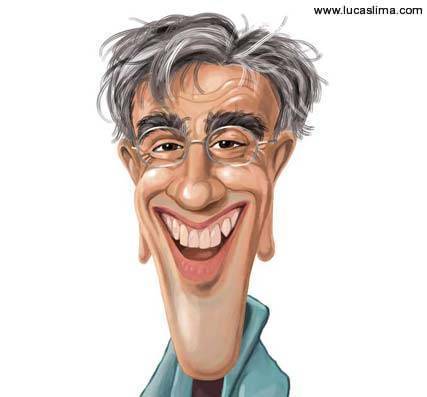Este post também está disponível em:
Português
English

Biography of the Bahian Caetano Veloso (Caetano Emanuel Viana Telles Veloso) who never imagined that, coming out of a small town in the Recôncavo Baiano, he would be so successful throughout Brazil and be one of the main expressions of Brazilian Popular Music. But that’s what happened.
Born on 7 August 1942 in Santo Amaro da Purificação, 73 kilometres from Salvador, Caetano Veloso, as he became known throughout the country, knew from an early age what he wanted to be in life: at just over 4 years old, Maria Bethânia’s brother was already composing A Tua Presença Morena, revealing his artistic talents.
But Caetano Veloso’s musical career really began when he moved with his family to Salvador in the early 60s. The Bahian capital was experiencing a moment of cultural effervescence and Caetano Veloso took advantage of his passion for music and João Gilberto’s bossa nova and began playing in the city’s bars. It was also in Salvador that Caetano met his partner Gilberto Gil.

Biografia de Caetano Veloso
From this friendship came compositions such as No dia em que eu vim-me embora, Panis et Circenses, São João, Xangô Menino, Haiti, Cinema Novo, Dada, among others.
During this period, Caetano Veloso also met Gal Costa and Tom Zé, future members of Tropicália. His first musical work was a soundtrack for the play ‘O Boca de Ouro’, by Nelson Rodrigues.
The same director, Álvaro Guimarães, also invited him to compose the soundtrack for Bertolt Brecht’s ‘The exception and the rule’. These jobs definitely influenced Caetano’s future and made him decide to become a singer-songwriter.
His first opportunity as a professional.
Caetano Veloso’s professional career began under the influence of his sister Bethânia, who was called to Rio to replace singer Nara Leão in the show ‘Opinião’, a hit in 1965. At his father Zezinho Veloso’s request, he accompanied his sister.
In the same year, Bethânia recorded É de Manhã, by Caetano Veloso, and the song marked her debut with a simple compact disc. Her first album ‘Domingo’ was only released in 1967, on which she sang alongside Gal Costa.
Difficult times in the country
Brazil was going through moments of repression on the part of the military government. With freedom of expression banned, artists tried at all costs to break the barriers of censorship. Caetano Veloso was one of those outraged by the situation the country was going through. Together with Gil, he launched the Tropicalist cultural movement in an attempt to express his dissatisfaction.
Through debauchery, irreverence and improvisation, Tropicalism revolutionised MPB, using foreign elements fused with Brazilian culture (the anthropophagic philosophy of modernist Oswald de Andrade) and based on counterculture.
The movement was launched at TV Record’s MPB Festival in 1967 with the songs Alegria, Alegria by Caetano Veloso and Domingo no Parque by Gil, which became anthems for the youth of the time. In 1968, at the height of the movement, Caetano released the album Tropicália, together with Gilberto Gil, Gal Costa and Tom Zé.
Caetano Veloso’s partnership with Gilberto Gil extended beyond music and into the lives of both artists. The clash of ideas with the military dictatorship led to their imprisonment in São Paulo and exile in England in 1968.
However, the geographical barrier didn’t stop the protests from continuing and, from London, Caetano Veloso sent articles to the newspaper O Pasquim and songs to various performers such as Gal Costa, Maria Bethânia, Elis Regina, Erasmo and Roberto Carlos.
Caetano Veloso back in Brazil
In 1972, Caetano Veloso returned to Brazil and went through a period of high creativity. Until the end of the 70s, many hits such as Tigresa, Leãozinho, Odara and Sampa were released. The meeting with his old mates Gal, Bethânia and Gil resulted in the formation of the group Doces Bárbaros in 1976.
The show toured São Paulo and ten other Brazilian cities, reviving old hits and resulting in the recording of an LP. In 1993, the partnership with Gilberto Gil was resumed and together they released the disc ‘Tropicália 2’.
A multimedia artist, Caetano Veloso has also ventured into other art forms. In 1986, together with Chico Buarque, he ran the Rede Globo television programme ‘Chico & Caetano’, where they sang and had guests. This experience on television helped to break down the image that the two musicians didn’t get along.
In the cinema, he directed the film O Cinema Falado and, as a writer, his debut was Verdade Tropical, in which he gives a personal account of the main aspects and events related to the Tropicalist movement.
Boldness continues to be Caetano Veloso’s trademark. Proof of this is the CD ‘A Foreign Sound’, released in 2004, with re-recordings of American songs.
Biography of singer-songwriter Caetano Veloso
Bahia.ws is the largest travel and tourism guide for Bahia and Salvador.



















